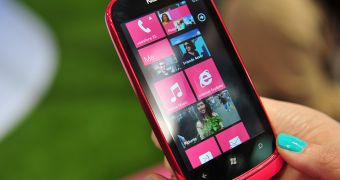Last week at the Mobile World Congress in Barcelona, Finnish mobile phone maker Nokia unveiled to the world its cheapest Windows Phone to date, the Lumia 610.
In fact, the new mobile phone is the cheapest Windows Phone device in the world, though it appears that it is not cheap enough to enable the company to better compete with Google’s Android platform at the very low-end of the market.
The company is aware of that, and has already admitted it. The handset vendor has also noted that it has a bit more work to do to create cheaper devices running under Microsoft’s mobile platform.
"We have a lot riding on the fact that we need to get a lower price point," Niklas Savander, executive vice-president at Nokia, covering brand, marketing, sales, supply chain, customer care and information technology, affirmed, Pocket-lint notes.
"We are competing with Android. Android is in many markets at the €100 price already, so that would suggest that if we are at €189 with the Lumia 610 we still have work to do when it comes to creating a lower-end first-time user smartphone."
By launching cheaper Windows Phone devices, Nokia will bring the platform in the hands of more users, thus replacing the currently available Nokia phones that run under the older Symbian platform.
"Symbian is doing a very good job in capturing that first-time smartphone user, but the platform is, of course, ageing. And the functionality isn't evolving as rapidly as it should, so we need to continue to push the price of handsets down when it comes to the low-end," Savander reportedly said.
The launch of Nokia Lumia 610 opened the gate to lower-end smartphones powered by Microsoft’s platform.
The handset runs under the Windows Phone 7 Tango operating system version, which has debuted at the MWC show in Barcelona with much lower requirements to RAM and processor speed.
Although there are some changes in the platform to fit these low spec’d devices, the overall experience remains unaltered, at least this is what Savander stated.
"You have to be very much into multiple applications and have everything open at the same time before you can see the engineering cuts that Microsoft has made to run it in lower memory," Savander reportedly said.

 14 DAY TRIAL //
14 DAY TRIAL //